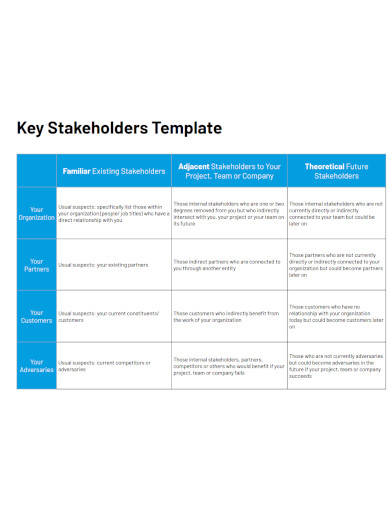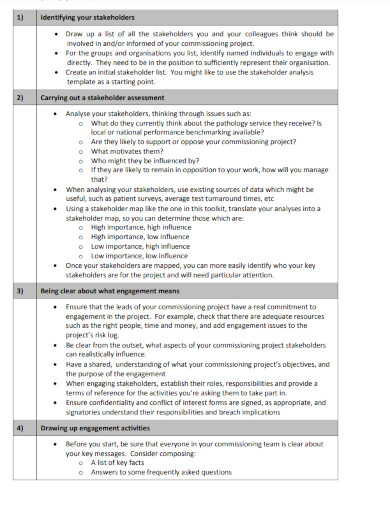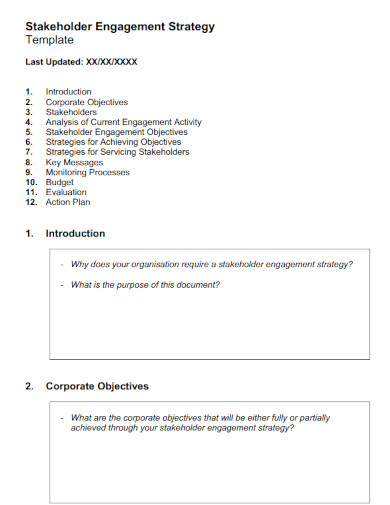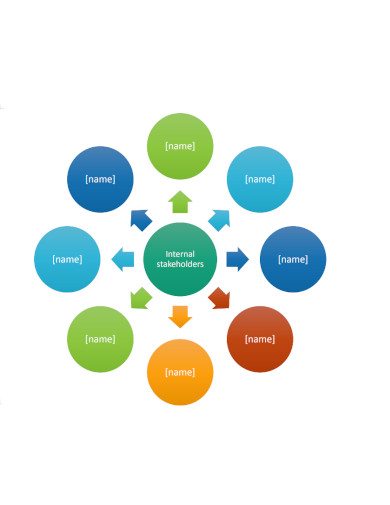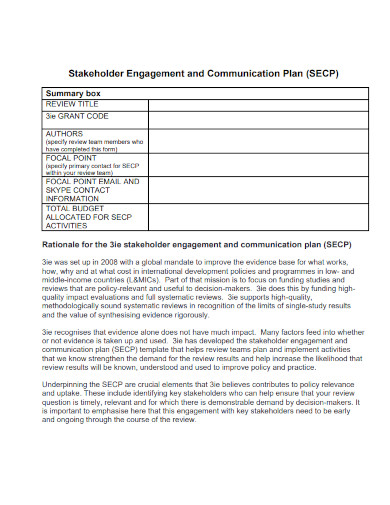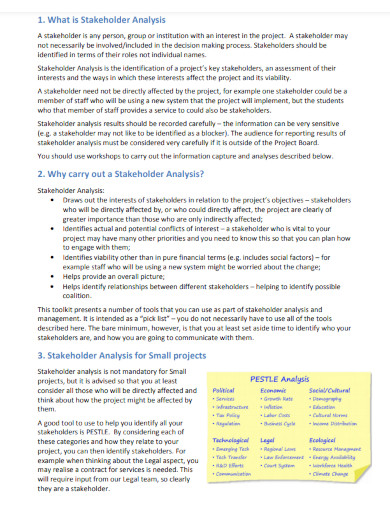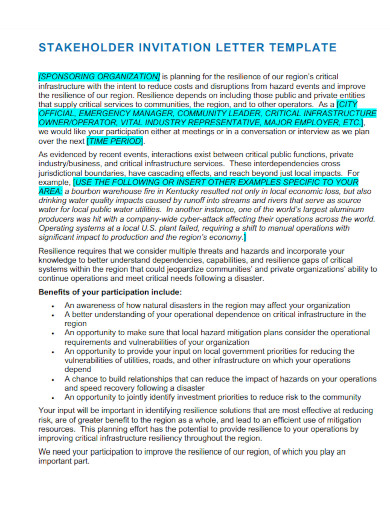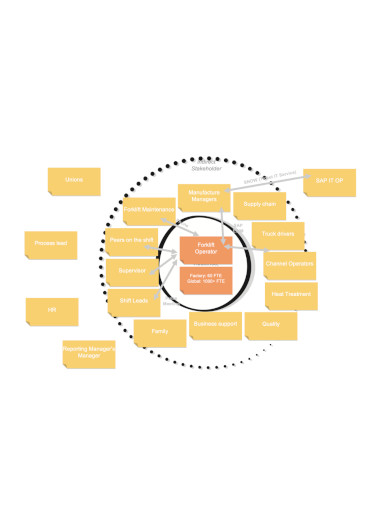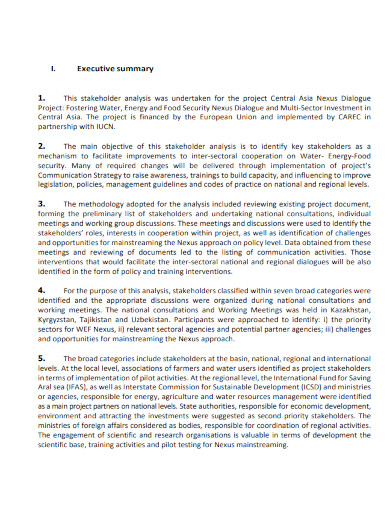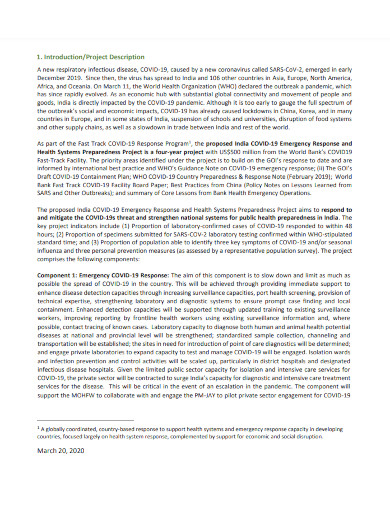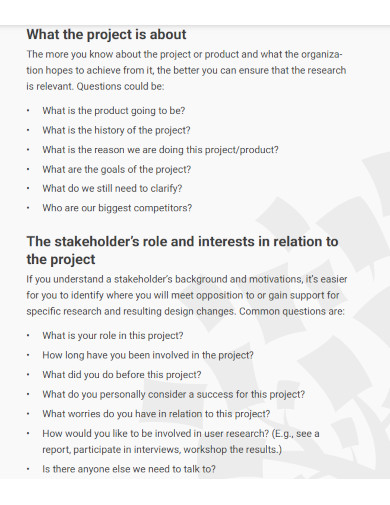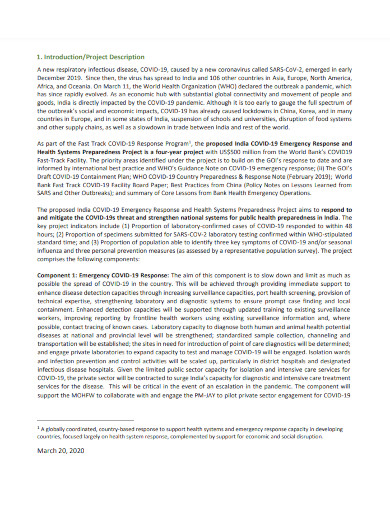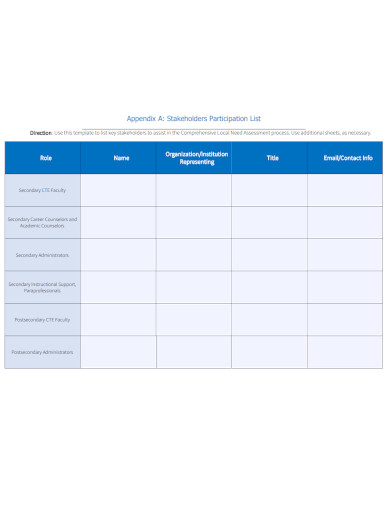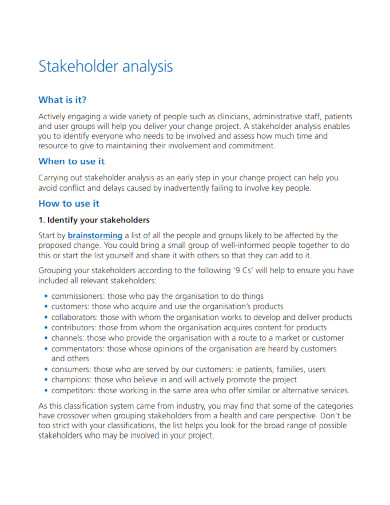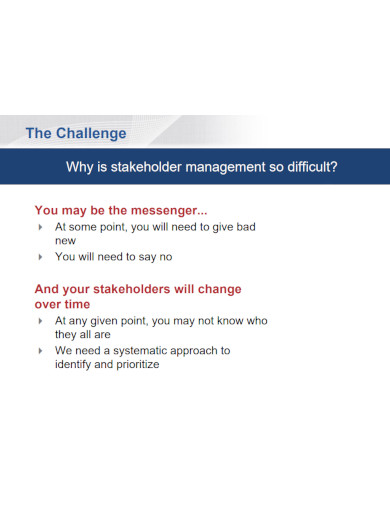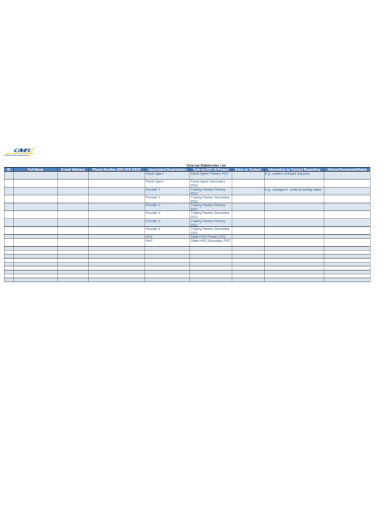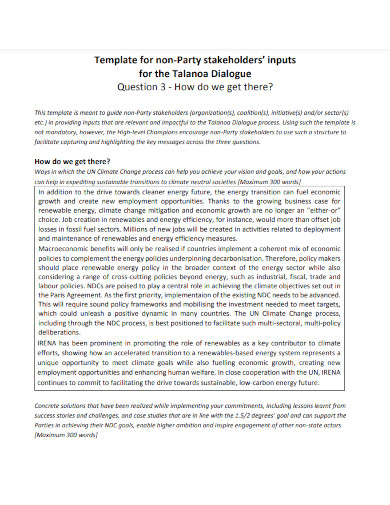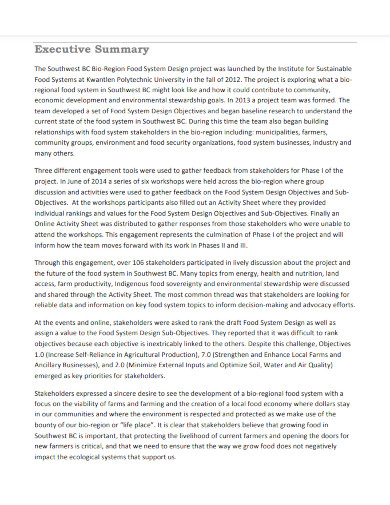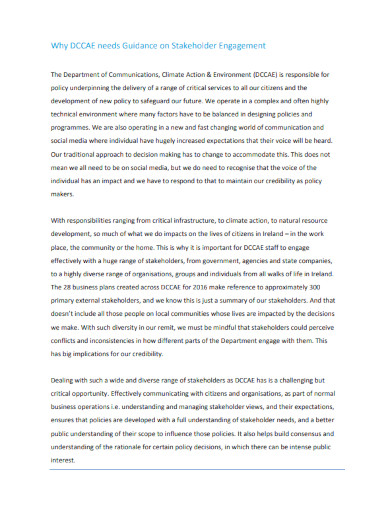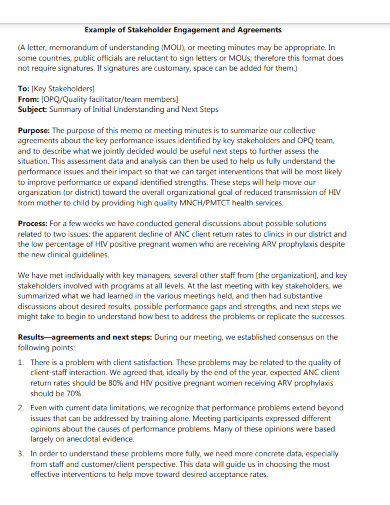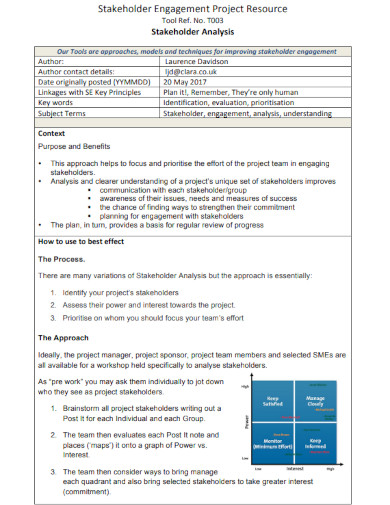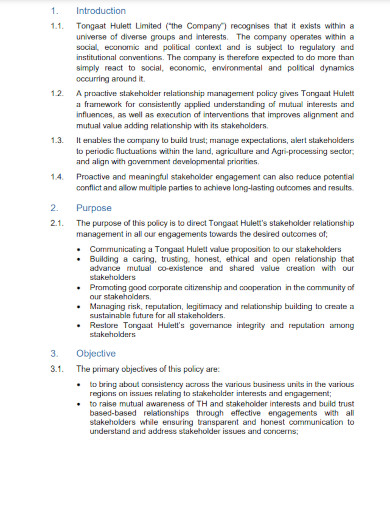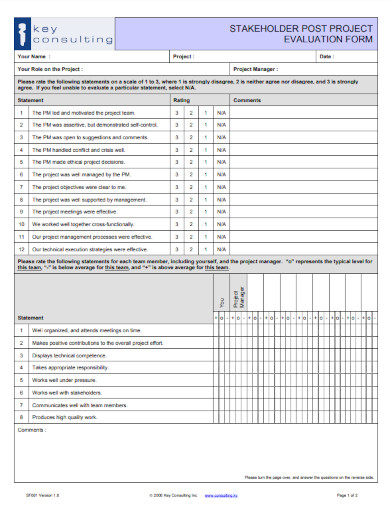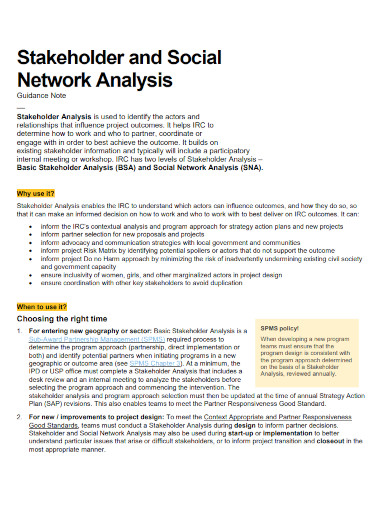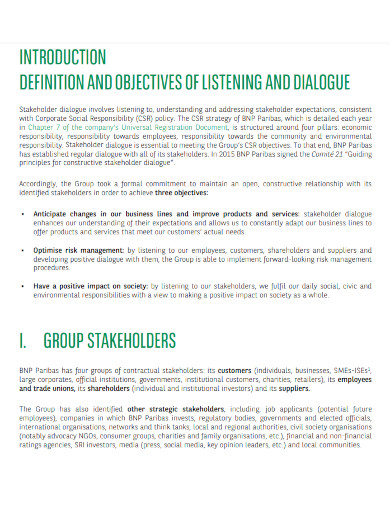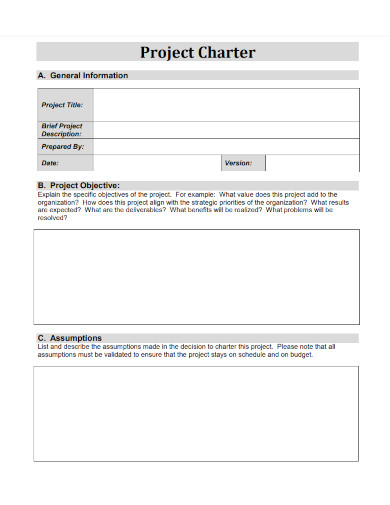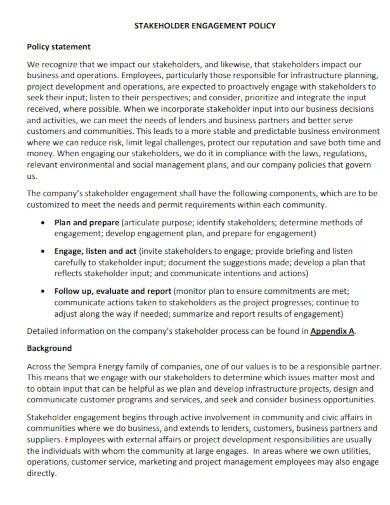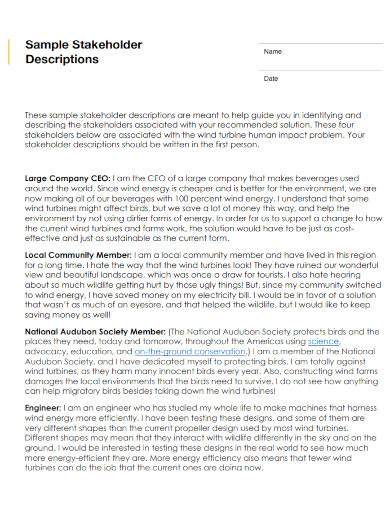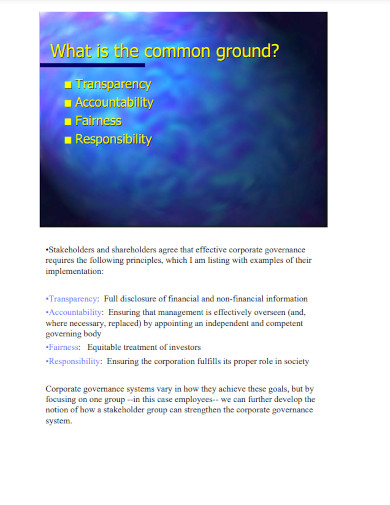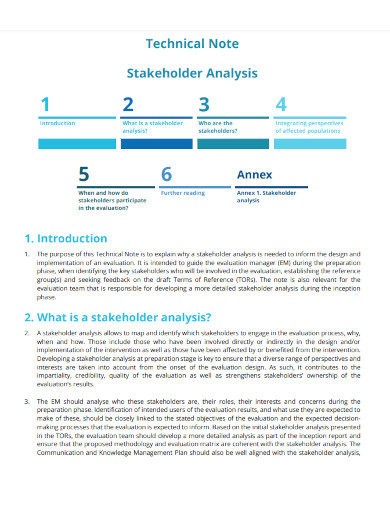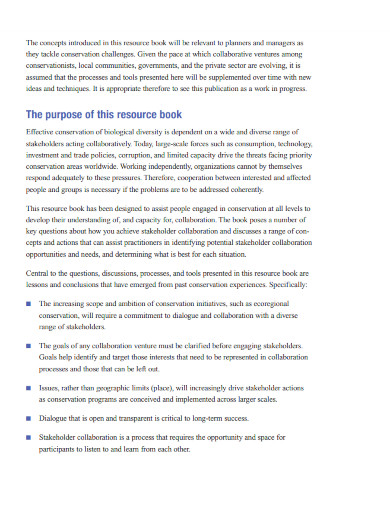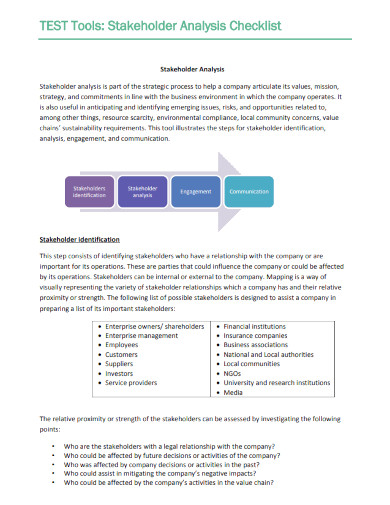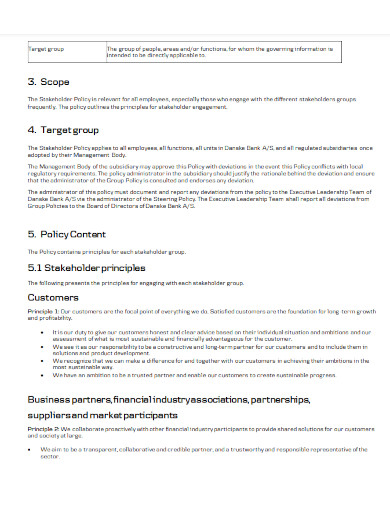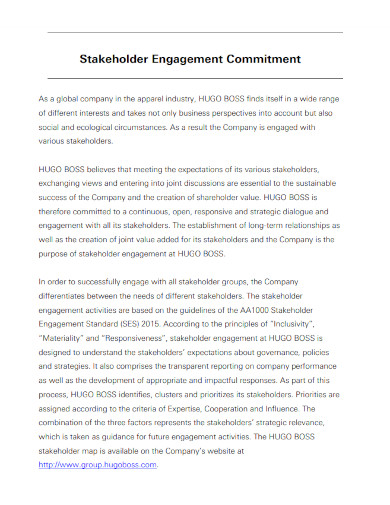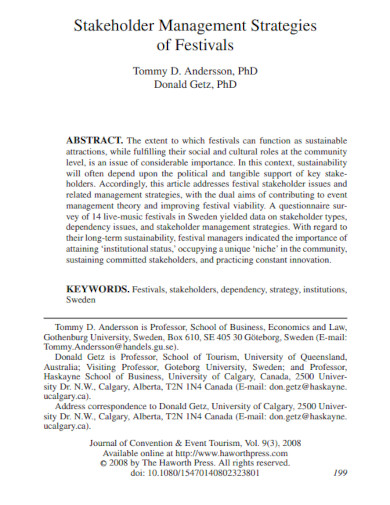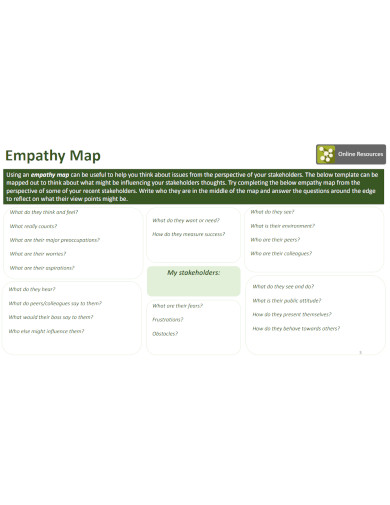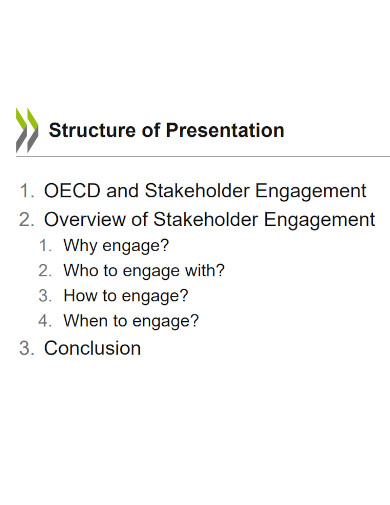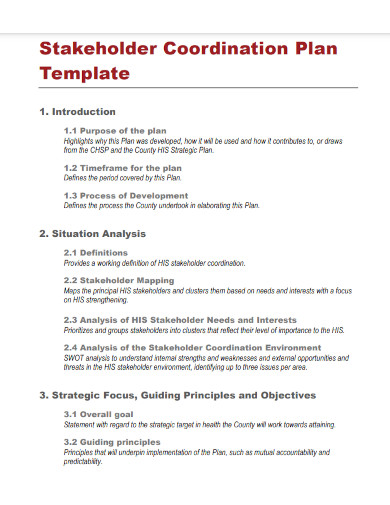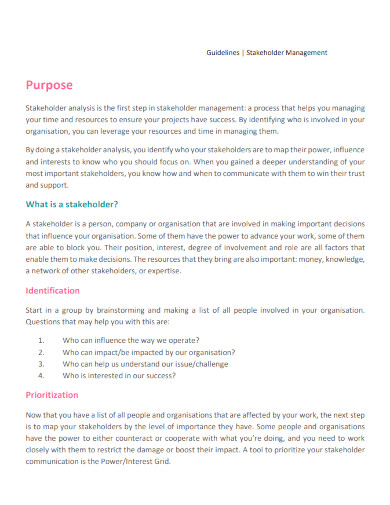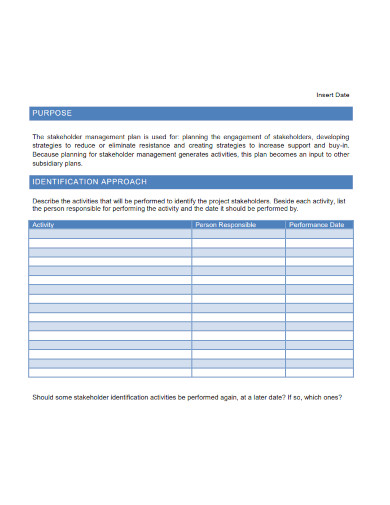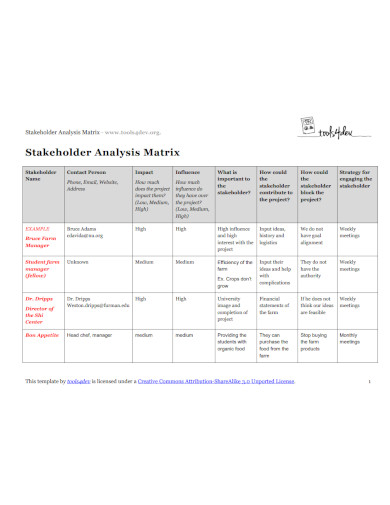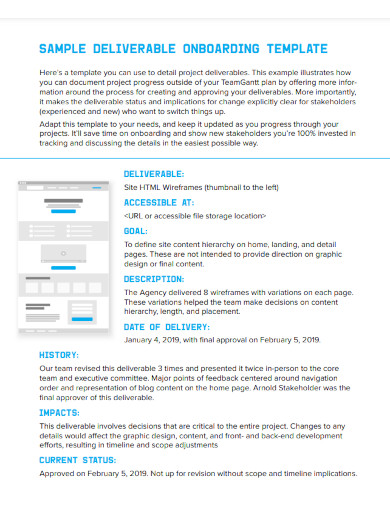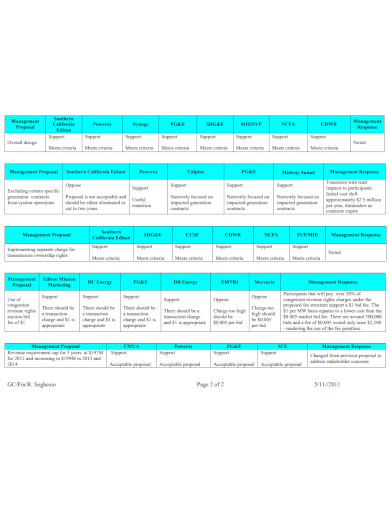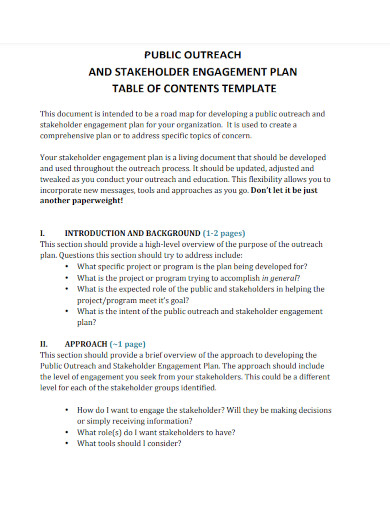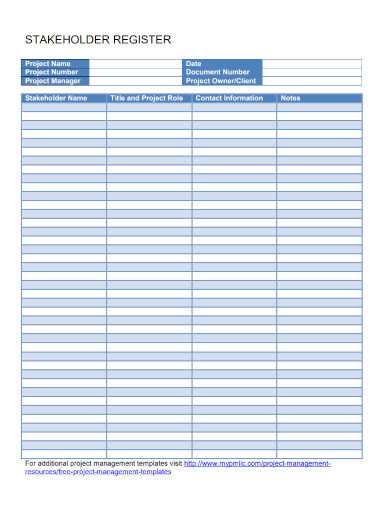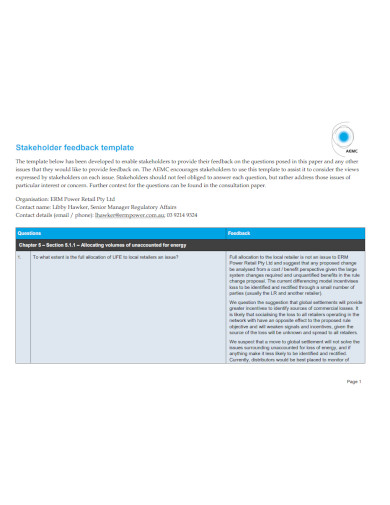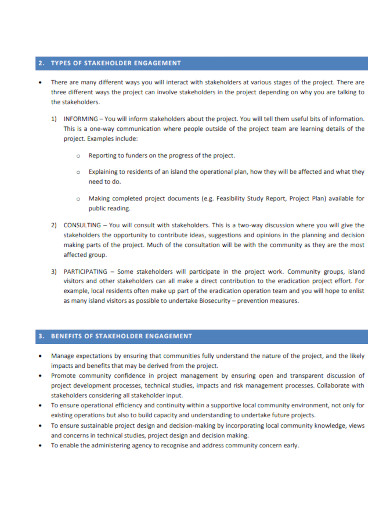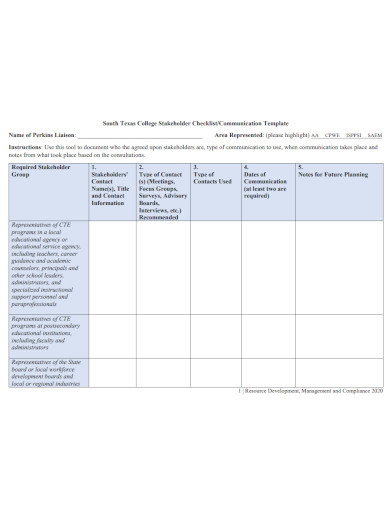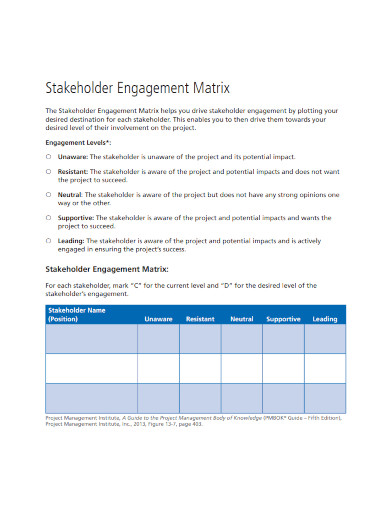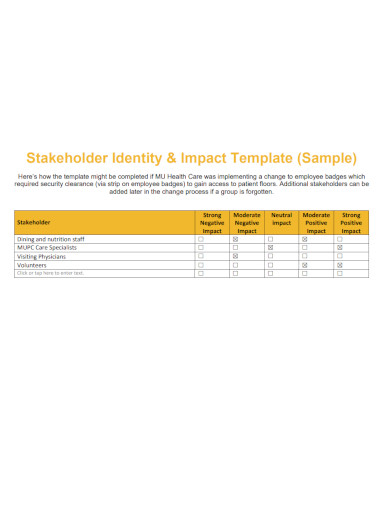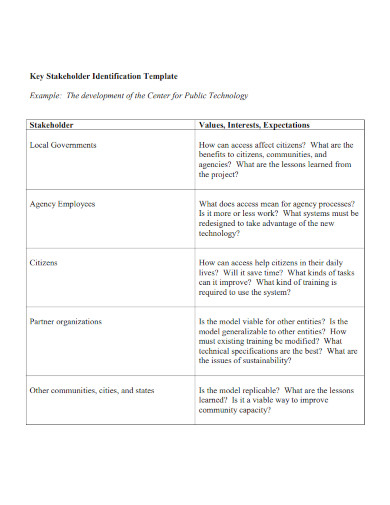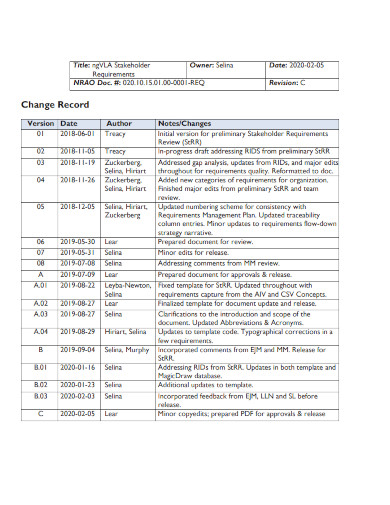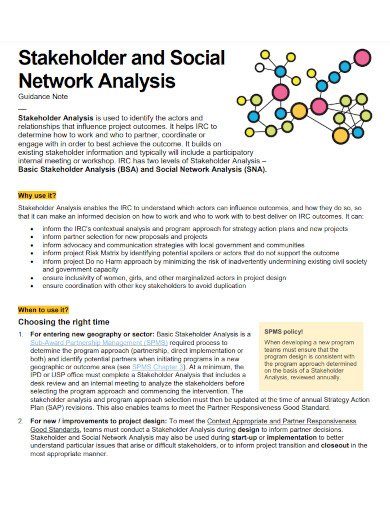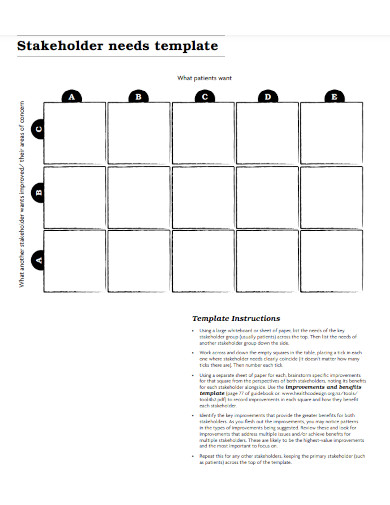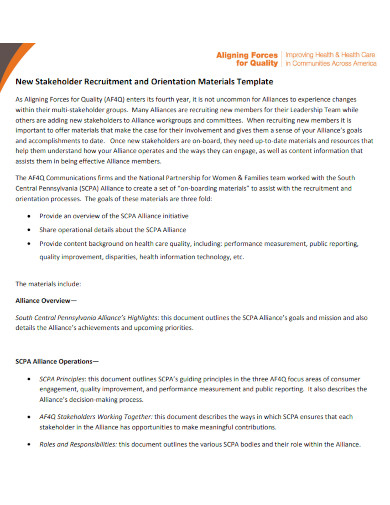61+ Stakeholder Examples to Download
There are many elements a business owner has to consider and juggle to ensure the success of his or her business. This puts a large emphasis on the need for one’s understanding of the external and internal stakeholders involved in a project or the overall business.
1. Key Stakeholders Template
2. Stakeholder Engagement
3. Stakeholder Engagement Strategy Template
4. Internal Stakeholders Map Template
5. Stakeholder Engagement Communication Plan
6. Stakeholder Analysis Toolkit
7. Stakeholder Invitation Letter Template
8. Stakeholder Map Template
9. Stakeholder Analysis Report
10. Preliminary Stakeholder Engagement Plan
11. Stakeholder Interviews Template
12. Stakeholder Mapping Checklist
13. Stakeholders Participation List
14. Stakeholder Analysis Template
15. Stakeholder Management Framework
16. Internal and External Stakeholder List Template
17. Identify the Stakeholders for Change Program
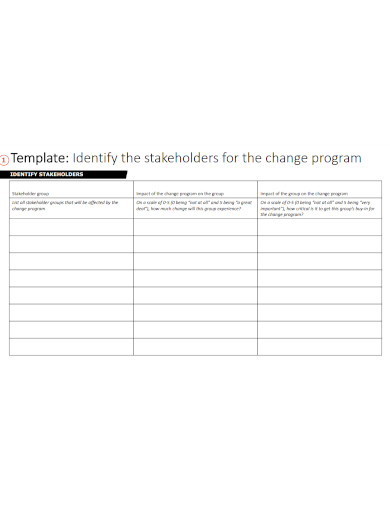
bestinclass.org
18. Non-Party Stakeholders Template
19. Stakeholder Engagement Report
20. Guidance for Staff on Stakeholder Engagement
21. Sample Stakeholder Agreement Letter
22. Stakeholder Engagement Plan
23. Stakeholder Consultation Report
24. Stakeholder Engagement Activity Planning
25. Stakeholder Engagement Project Resource
26. Stakeholder Relationship Management Policy
27. Stakeholder Case Analysis
28. Stakeholder Post Project Evaluation Project
29. Stakeholder and Social Network Analysis
30. Stakeholder Corporate Social Responsibility
31. Stakeholders Project Charter
32. Stakeholder Engagement Policy
33. Sample Stakeholder Descriptions
34. Stakeholders Roles
35. Stakeholder Analysis Technical Note
36. Stakeholder Collaboration Template
37. Stakeholder Analysis Checklist
38. Stakeholder Policy
39. Stakeholder Engagement Commitment
40. Stakeholder Management Strategies of Festivals
41. Stakeholder Management
42. Stakeholder Engagement in Regulatory Policy
43. Stakeholder Coordination Plan Template
44. Stakeholder Management Tools
45. Stakeholder Management Plan Template
46. Stakeholder Communication Plan Template
47. Stakeholder Analysis Matrix Template
48. New Stakeholder Onboarding Process
49. Stakeholder Matrix Template
50. Public Outreach Stakeholder Engagement Plan
51. Stakeholder Register Template
52. Stakeholder Feedback Template
53. Guidelines on Stakeholder Engagement
54. Stakeholder Checklist Communication Template
55. Project Stakeholder Management
56. Stakeholder Identity Impact Template
57. Key Stakeholder Identification Template
58. Stakeholder Requirements Template
59. Stakeholder and Social Network Analysis
60. Stakeholder Planning Engagement Activity
61. Stakeholder Needs Template
62. New Stakeholder Recruitment Materials Template
What Is a Stakeholder
A stakeholder is an individual or a group of individuals that are affected by the outcome of the business or organization. These stakeholders will not only be affected by the quality of the outcome but will also directly affect the likelihood of the success of the project or business outcome. Therefore the person needs to know how to do stakeholder management and stakeholder engagement.
How to Conduct a Stakeholder Analysis
A good business will not only know its customers but will understand the importance and value of its stakeholders. One of the best ways to do this is through one’s usage of a stakeholder analysis, which follows a specific format or template.
Step 1: If possible, Conduct a Brainstorming Session
A stakeholder analysis is best conducted with a team of interested and related individuals. If possible you should conduct a brainstorming session for the following steps to outline and easily analyze all the elements in the stakeholder analysis.
Step 2: Identify the Stakeholders in the Business or Project
Begin by identifying all the stakeholders that are present in the business or project. This should mainly include the shareholders, the employees, the suppliers, and the customers.
Step 3: Categorize the Stakeholders
You must categorize the stakeholders into four different modes with a focus on interest and power or influence over the project or business. These four modes are high interest and high power, high interest, and low power, low interest and high power, and low interest and low power.
Step 4: Analyze Each Stakeholder
You must now analyze each stakeholder with their categories in mind. For example, a stakeholder with high interest and power should have more attention to the analysis due to their overall impact on the outcome or quality of the business or project.
FAQs
Stakeholder vs. shareholder; what is the difference between stakeholder vs shareholder?
Both terms refer to people who have a say or have a valued interest in the share of the business or company. A project to create or improve a product or service, will not only affect the company or business but will also impact the people working on the project and the business as a whole. The people who are affected are called the stakeholders because they simply have a stake in the aftermath of the project or business as a whole. For example, if a project fails, not only will the personnel working on the project be negatively affected, but the other investors and employees will also be affected by the failed project. Shareholders are the people who invest in the project, business, or company, but may or may not be directly involved in the process of the project. Usually, the shareholders are a group of people who have a large interest and influence in the project, business, or company but may or may not be situated in the company. Therefore not all stakeholders are shareholders, but all shareholders are stakeholders due to their status as an investor.
What are the main stakeholders in a business or company?
Stakeholders are the individuals related to a specified business that are affected by the outcome of the products, services, and projects the business or company conducts and offers. Four main types of stakeholders can be easily identified. The first is the investors, these people are the ones who have provided the initial capital to start the business process, and have a large stake and interest in the company’s value. The second type of stakeholders is the employees who work in the business, company, or project since they are the main natural resource used in the production of a specific product, service, or project they have a vested interest in the future and outcome of the business or company. The third type of stakeholder is the supplier who provides the business or company with the raw materials or commodities. The fourth main type of stakeholder is the customer or consumers of the product or service, they are the people who obtain the products or services of the company through the medium of monetary resources. There are also newer types of stakeholders called the community, the government, and trade organizations which are in a more macro setting or scale.
What is stakeholder theory?
Edward Freeman proposed the stakeholder theory, an economic theory that quantifies the interaction between a corporation and its shareholders, consumers, employees, and suppliers. This approach emphasizes the company’s ethics, values, aims, and goals to benefit stakeholders. The philosophy also ensures that managers and company owners prioritize stakeholders above shareholders. The idea provides a framework for assessing the impact of stakeholders on a company’s success or failure.
Stakeholders have a stake in the company’s success since they are impacted by its activities. Understanding a company’s stakeholders may boost success and happiness. Stakeholders may significantly impact the company’s goods and services if not handled appropriately.



